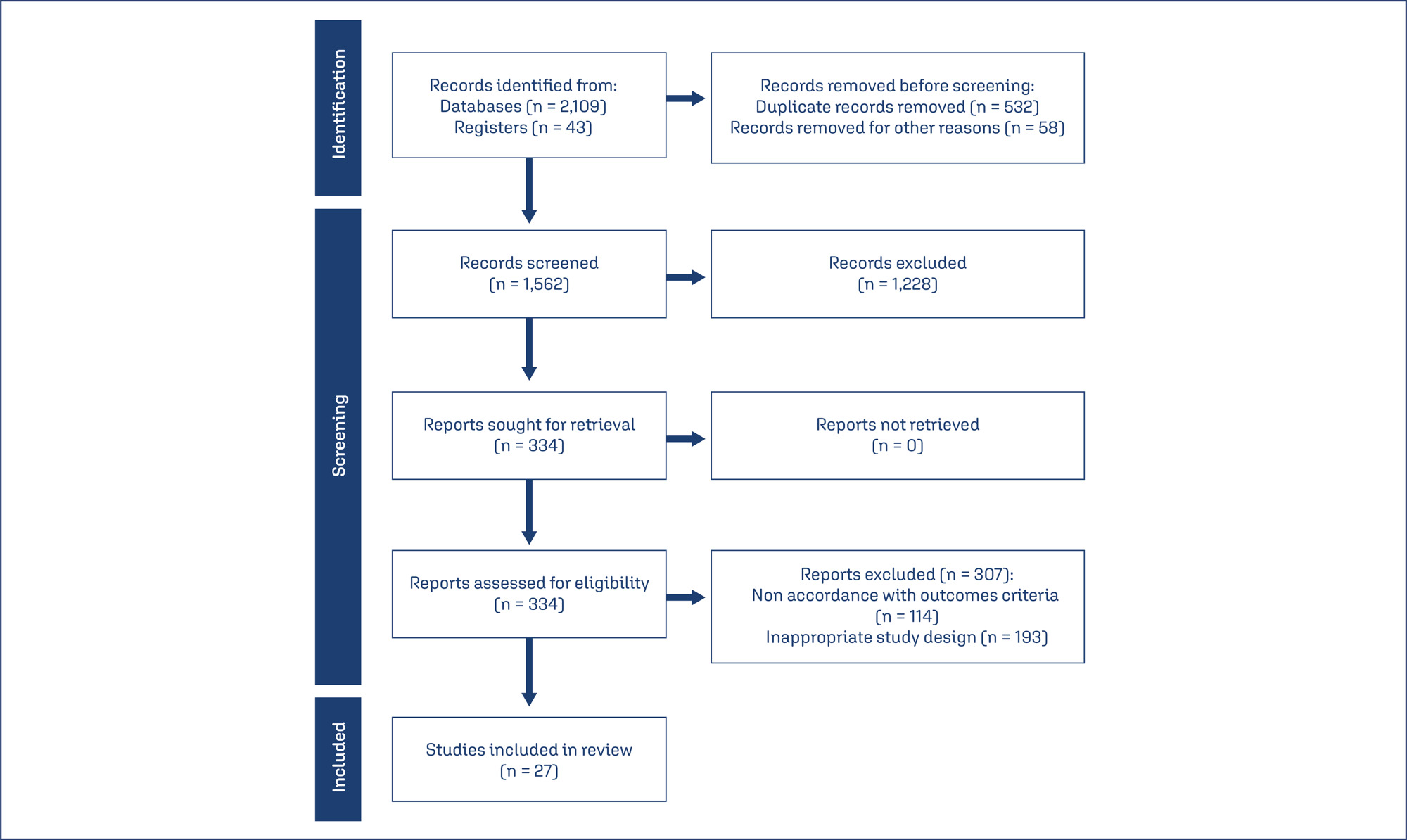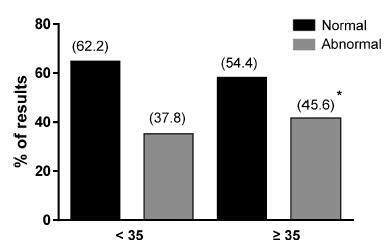Summary
Revista Brasileira de Ginecologia e Obstetrícia. 2024;46:e-rbgo72
26% of all pregnancies end in miscarriage, and up to 10% of clinically diagnosed pregnancies, and recurrent pregnancy loss is 5% among couples of childbearing ages. Although there are several known causes of pregnancy loss in the first half, including recurrent pregnancy loss, including parental chromosomal abnormalities, uterine malformations, endocrinological disorders, and immunological abnormalities, about half of the cases of pregnancy loss in its first half remain unexplained.
The review includes observational controlled studies (case-control or cohort, longitudinal studies, reviews, meta-analyses), which include the study of biochemical factors for predicting pregnancy losses in the first half, in singlet pregnancy. The Newcastle-Ottawa Scale (NOS) was used to assess the research quality.
Finally, 27 studies were included in the review, which has 134904 examined patients. The results of the review include estimates of β-human chorionic gonadotropin, progesterone, pregnancy-associated protein – A, angiogenic vascular factors, estradiol, α-fetoprotein, homocysteine and CA-125 as a predictors or markers of the first half pregnancy losses.
It may be concluded that to date, research data indicate the unavailability of any reliable biochemical marker for predicting pregnancy losses in its first half and require either a combination of them or comparison with clinical evidence. A fairly new model shall be considered for the assessment of α-fetoprotein in vaginal blood, which may have great prospects in predicting spontaneous miscarriages.

Summary
Revista Brasileira de Ginecologia e Obstetrícia. 2023;45(9):524-534
To assess the knowledge, attitude, and practice of Brazilian physicians about immediate postpartum and postabortion intrauterine device insertion.
Cross-sectional online survey involving physicians on duty in public Brazilian hospitals. Participants answered an anonymous questionnaire with close-ended questions to assess their knowledge, attitude, and experience on the immediate postpartum and postabortion insertion of copper intrauterine devices.
One hundred twenty-seven physicians working in 23 hospitals in the 5 geographic regions of Brazil completed the questionnaire. Most were female (68.5%) and worked in teaching hospitals (95.3%). The mean (standard deviation) knowledge score (0–10 scale) was 5.3 (1.3); only 27.6% of the participants had overall scores ≥7.0. Most physicians (73.2%) would insert a postpartum intrauterine device in themselves/family members. About 42% of respondents stated that they had not received any training on postpartum or postabortion intrauterine device insertion. In the past 12 months, 19.7%, 22.8%, and 53.5% of respondents stated they had not inserted any intrauterine device during a cesarean section, immediately after a vaginal delivery, or after an abortion, respectively.
Most study participants have a positive attitude toward the insertion of intrauterine devices in the immediate postpartum period, but they have limited knowledge about the use of this contraceptive method. A large percentage of respondents did not have previous training on postpartum and postabortion intrauterine device insertion and had not performed any such insertions in the last 12 months. Strategies are needed to improve the knowledge, training, and experience of Brazilian physicians on immediate postpartum and postabortion intrauterine device insertion.
Summary
Revista Brasileira de Ginecologia e Obstetrícia. 2017;39(3):110-114
To describe the frequencies of chromosomal abnormalities found in abortion material, and to observe its correlation to maternal age.
A retrospective study was conducted based on data obtained from the databank of a medical genetics laboratory in Belo Horizonte, MG, Brazil. A total of 884 results from products of conception analysis were included, 204 of which were analyzed by cytogenetics, and 680bymolecular biology basedon quantitative fluorescence polymerase chain reaction (QF-PCR). The frequency of individual chromosomal aberrations and the relationship between the presence of anomalies and maternal age were also evaluated.
The conventional cytogenetics technique was able to detect 52% of normal and 48% of abnormal results in the analyzed material. Quantitative fluorescence polymerase chain reaction revealed 60% of normal and 40% of abnormal results from the samples evaluated by this method. The presence of trisomy 15 was detected only by cytogenetics, as it was not included in the QF-PCR routine investigation in the laboratory. A significant increase in abnormal results was observed among women aged 35 years or older compared with younger women (p = 0.02).
Chromosomal aberrations are still a major cause of spontaneous abortion, and the conventional cytogenetics technique is efficient for miscarriage material analysis, but molecular methods such as QF-PCR are adequate complementary strategies to detect the major chromosomal anomalies, leading to technical reports with reliable results.

Summary
Revista Brasileira de Ginecologia e Obstetrícia. 2013;35(1):27-32
DOI 10.1590/S0100-72032013000100006
PURPOSE: To compare and analyze socioeconomic aspects and the emotional experience of women with spontaneous or induced abortion and in women living in the outskirts of São Paulo. METHODS: A prospective case-control study carried out from July 2008 to March 2010, involving semi-structured interviews with women who presented a previous diagnosis of abortion and who had been admitted to two public hospitals in the outskirts of São Paulo. The study included 100 women with diagnosis of abortion and were hospitalized for curettage. Eleven women who reported induced abortion (11%) represented the case group. The control group (n=22) was selected at a 2:1 ratio according to the following procedure: for every case of induced abortion, the next two cases of spontaneous abortion at the same hospital. A semistructured interview was conducted with questions regarding emotional aspects and family, social and economic context. RESULTS: The women with induced abortion compared to the group with spontaneous abortion had lower educational level, with more frequent elementary level (82 versus 36%, p=0.04), lower income (median, R$ 1,000.00 versus R$ 1,400.00, p=0.04), lower personal income (median, R$ 200.00 versus R$ 333.00, p=0.04), higher frequency of negative feelings upon suspicion (82 versus 22%, p=0.004) and confirmation (72 versus 22%, p=0.03) of pregnancy. CONCLUSION: Among women looking for health care in hospitals in the outskirts of São Paulo, induced abortion is related to unfavorable socioeconomic conditions, which affects the emotional experiences of suspicion and confirmation of pregnancy.